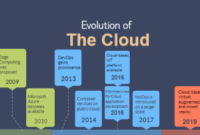Adoption of Fintech Solutions
Daftar Isi Artikel
Financial technology, or fintech, is revolutionizing how businesses manage their finances. Adopting fintech solutions can streamline operations, enhance accuracy, and provide valuable insights. Key fintech innovations include:
- Automated Accounting Software: Cloud-based accounting platforms like QuickBooks, Xero, and Sage automate routine accounting tasks, such as invoicing, expense tracking, and financial reporting. Automation reduces errors and frees up time for strategic activities.
- Expense Management Tools: Apps like Expensify and Concur simplify expense reporting and approval processes. These tools help track expenses, manage receipts, and ensure compliance with company policies.
- Financial Forecasting Tools: Advanced forecasting tools use algorithms and machine learning to predict future financial trends and cash flow. These tools provide businesses with insights to make informed decisions and plan for growth.
- Blockchain for Financial Transactions: Blockchain technology enhances transparency and security in financial transactions. It can be used for secure payments, smart contracts, and fraud prevention, reducing the risk of financial fraud.
Enhancing Financial Decision-Making with Data Analytics
Data analytics plays a crucial role in improving financial decision-making. Leveraging data analytics involves:
- Real-Time Financial Dashboards: Financial dashboards provide real-time visibility into key financial metrics and performance indicators. Dashboards help businesses monitor financial health, track KPIs, and make data-driven decisions.
- Predictive Analytics: Predictive analytics uses historical data and statistical algorithms to forecast future financial performance. Businesses can anticipate trends, identify potential risks, and optimize financial strategies.
- Big Data Integration: Integrating big data into financial analysis allows businesses to analyze large volumes of data from various sources. This comprehensive analysis can uncover insights and drive strategic decisions.
- Performance Metrics Analysis: Regularly analyze performance metrics such as profitability ratios, liquidity ratios, and efficiency ratios to assess financial health and operational effectiveness.
Building a Sustainable Financial Strategy
Implementing Sustainable Practices
Incorporating sustainable practices into financial strategies not only benefits the environment but also enhances long-term financial performance. Sustainable practices include:
- Green Investments: Invest in energy-efficient technologies and sustainable practices that reduce environmental impact and operational costs. Examples include renewable energy systems and waste reduction programs.
- Corporate Social Responsibility (CSR): Develop CSR initiatives that align with the company’s values and goals. CSR efforts can enhance brand reputation, attract customers, and foster positive relationships with stakeholders.
- Sustainable Supply Chain Management: Evaluate and select suppliers based on their sustainability practices. Partnering with sustainable suppliers can reduce environmental impact and improve supply chain resilience.
Long-Term Financial Planning
Long-term financial planning is essential for achieving sustained success and growth. Key elements of long-term planning include:
- Strategic Vision: Develop a clear long-term vision for the business, including growth objectives, market expansion, and innovation goals. Align financial strategies with this vision to ensure coherence and focus.
- Capital Allocation: Plan for capital allocation to support long-term investments and growth initiatives. Allocate resources to projects that drive strategic objectives and offer high potential returns.
- Risk Management: Implement risk management strategies to mitigate long-term risks, such as economic downturns, market volatility, and regulatory changes. Regularly review and update risk management plans.
- Succession Planning: Prepare for leadership transitions by developing a succession plan. Identify and train potential leaders to ensure continuity and stability in financial management.
Fostering Financial Accountability
Building a Culture of Financial Accountability
Promoting a culture of financial accountability within the organization enhances financial management and performance. Key practices include:
- Clear Financial Policies: Establish and communicate clear financial policies and procedures. Ensure that all employees understand their roles and responsibilities related to financial management.
- Performance Reviews: Conduct regular performance reviews to assess financial performance and accountability. Provide feedback and support to employees responsible for financial tasks.
- Incentive Programs: Implement incentive programs that align with financial goals. Reward employees for achieving financial targets and contributing to overall success.
- Transparency and Communication: Foster open communication about financial performance and decision-making. Transparency helps build trust and ensures that all stakeholders are informed and engaged.
Ensuring Compliance and Ethical Practices
Compliance with financial regulations and ethical practices is crucial for maintaining integrity and avoiding legal issues. Key considerations include:
- Regulatory Compliance: Stay updated on financial regulations and compliance requirements. Ensure adherence to accounting standards, tax laws, and industry-specific regulations.
- Ethical Standards: Uphold high ethical standards in financial management. Avoid practices that could lead to conflicts of interest, fraud, or misrepresentation.
- Internal Audits and Reviews: Conduct regular internal audits and reviews to ensure compliance with policies and regulations. Address any issues promptly and implement corrective actions.
Conclusion
Effectively managing business money is a multifaceted endeavor that involves strategic planning, financial controls, technology adoption, and sustainable practices. By aligning financial strategies with business goals, leveraging fintech solutions, and fostering a culture of accountability, businesses can navigate financial challenges and achieve long-term success.
A comprehensive approach to financial management enables businesses to optimize resources, mitigate risks, and capitalize on opportunities for growth. As the financial landscape continues to evolve, staying informed, adaptable, and proactive will be essential for sustaining financial health and achieving enduring success.
Ultimately, mastering the art of financial management is not just about balancing the books—it’s about strategically positioning the organization for continued prosperity and resilience. By prioritizing effective financial practices and embracing innovation, businesses can build a solid foundation for future success and thrive in a competitive and dynamic environment.




